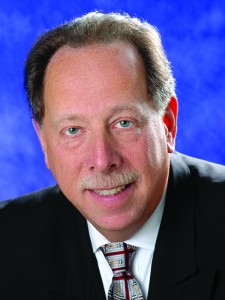

Lenders make their money by collecting interest and fees. Employment of principal is utilization of their inventory in the hopes of turning a profit (let alone covering their expense of doing business). This concept is often lost on borrowers — especially borrowers that have fallen into default. Unfortunately, it is often lost on bankruptcy judges as well.
Section 1123(d) of the Bankruptcy Code provides:
… if it is proposed in a plan to cure a default, the amount necessary to cure the default shall be determined in accordance with the underlying agreement and applicable nonbankruptcy law.
In general, lenders charge a default rate of interest to compensate for the increased credit risk that occurs if a borrower defaults and to cover the additional labor incurred in administering a defaulted loan.
Lenders that have not imposed a default rate of interest before the borrower files for bankruptcy will typically not seek to impose a default rate during proceedings. However, if a default rate was imposed pre-petition, the lender will often insist on recovering interest at the default rate during the administration of the case and often after a plan of reorganization is confirmed.
In re New Investments
In re New Investments is a recent decision from the 9th U.S. Circuit Court of Appeals that addressed this issue, resulting in the 9th Circuit joining the majority of circuits in enforcing a default interest rate, despite a confirmed plan of reorganization calling to cure the default and roll back to the pre-default contract rate.
In reaching its decision, the 9th Circuit revisited its 1988 decision in Great Western Bank & Trust v. Entz-White Lumber And Supply, which had held that a borrower/debtor was “entitled to avoid all consequences of the default, including higher post-default interest rates.” The court needed to reconcile 1123(d) with 1123(a), which provides, “Notwithstanding any otherwise applicable nonbankruptcy law, a plan shall … (5) provide adequate means for the plan’s implementation, such as … (G) curing or waiving of any default.”
Courts had long relied on 1123(a) to allow debtors to roll back interest to the pre-default contract rate until the enactment of 1123(d) that amended the Bankruptcy Code in 1994. In the more than 22 years since the amendment, certain courts have ignored 1123(d) and allowed debtors to roll back default interest rates over the objection of lenders.
In the 9th Circuit case, the debtor operated a hotel in Washington State and obtained a $2.75 million mortgage loan from Frontier Bank. The debtor failed to repay the loan when it matured, and the bank, by its successor, imposed the default rate of interest and commenced a non-judicial foreclosure, which was the catalyst for the Chapter 11 filing. The debtor then proposed a plan of reorganization that called for a sale of the hotel and recast the loan back to the pre-default contract interest rate. The dispute with the bank’s successor related to the amount of the bank’s secured claim — specifically its right to the default rate of interest. Since the case was a liquidating 11, the effect of the interest roll back was solely to increase the funds available to the junior creditors, including administrative creditors.
The Concept of Cure
The confirmed plan treated the bank as unimpaired, but the debtor argued that the pre-default interest rate should apply. The bank disagreed. The bankruptcy court ruled in favor of the debtor, and the bank appealed. As it was clear that the case would ultimately reach the Court of Appeals, the 9th Circuit certified the case, negating the need to first appeal to the district court. The 9th Circuit stated:
In Entz-White, we observed that the Bankruptcy Code did not define “cure.”1 We borrowed the 2nd Circuit’s definition: “A default is an event in the debtor-creditor relationship which triggers certain consequences. Curing a default commonly means taking care of the triggering event and returning to pre-default conditions. The consequences are thus nullified. This is the concept of ‘cure’ used throughout the Bankruptcy Code.”2 We held that “the power to cure under the Bankruptcy Code authorizes a plan to nullify all consequences of default, including avoidance of default penalties such as higher interest.”3 As a result, a debtor whose plan proposed to cure a default would allow him to avoid having to pay a higher, post-default interest rate called for in the loan agreement.
Entz-White was decided in 1988. In 1994, Congress amended §1123 to add subsection (d)4…Subsection §1123(d) renders void Entz-White’s rule that a debtor who proposes to cure a default may avoid a higher, post-default interest rate in a loan agreement. Subsection (d) governs here because [debtor’s] plan proposes to cure a default.
In rendering its decision, the 9th Circuit specifically noted that in adopting 1123(d), Congress intended to overrule the decision of the U.S. Supreme Court in Rake v. Wade (no connection to the famous Roe v. Wade), which had held that “a Chapter 13 debtor who proposed to cure a default was required to pay interest on his arrearages to a secured creditor even if the underlying loan agreement did not provide for such interest. Congress viewed this as an untoward result that allowed for “interest on interest payments.”
The court noted that its holding might appear difficult in light of the intent of the Bankruptcy Code to provide for a fresh start but was compelled by the clear intent of Congress.
§1123(a) vs. §1123(d)
Of the 11 appellate courts, the 11th Circuit was the only other to confront the issue of §1123(a) versus §1123(d) head-on. In the case In re Sagamore Partners, the 11th Circuit held that the 1994 amendments to the Bankruptcy Code “require a debtor to cure its default in accordance with the underlying contract or agreement, so long as that document complies with relevant nonbankruptcy law.”
The 11th Circuit debtor was a Miami Beach hotel owner who had received a $31.5 million refinancing in 2006. The debtor stopped making payments on the loan in August 2009 and ultimately filed for bankruptcy in October 2011. In the bankruptcy action, the bank’s proof of claim demanded principal of $31.5 million plus the resulting default rate interest pursuant to the terms of the agreement. The debtor objected to the default interest rate, arguing that §1124 of the Bankruptcy Code does not require the debtor to pay accrued default rate interest.
Section 1124 provides (in part) that a claim is impaired unless:
Notwithstanding any contractual provision or applicable law that entitles the holder of such claim or interest to demand or receive accelerated payment of such claim or interest after the occurrence of a default (A) cures any such default that occurred before or after the commencement of the case under this title …. (B) reinstates the maturity of such claim or interest as such maturity existed before such default;
Notwithstanding, the 11th Circuit ultimately rejected the debtor’s argument, pointing to §1123(d) in support of its conclusion that when “the underlying agreement calls for a default-rate interest and the applicable nonbankruptcy law permits it, a party cannot cure its default without paying the agreed-upon default-rate interest.”
No Slam Dunk
Other circuits have directly addressed the rights of lenders to recover default rates of interest post-petition and post-confirmation while others have managed to avoid the issue. The 1st Circuit (2014), 2nd Circuit (1998), 5th Circuit (1998, yet only in dicta), 6th Circuit (2006) and 7th Circuit (1994) have each upheld a lender’s right to default rate interest without necessarily addressing the concept in the light of 1123(d). The remaining appellate courts have avoided addressing the issue of default rate interest. However lower courts within each of these circuits have upheld the right to default rate interest.
After reading this article you may be inclined to believe that a lender’s right to default rate interest is a slam dunk but you should exercise caution. Many courts continue to express the view that the default interest rate must not be a penalty and have reserved the right to determine whether the rate imposed is equitable. In the event a court takes on this challenge — especially if it takes it on and unreasonably knocks out an otherwise valid default interest rate — you can expect to read about it here.
Footnotes
- 850 F.2d at 1340
- Id. (alteration omitted) (quoting Di Pierro v. Taddeo (In re Taddeo), Case: 13-36194, 11/04/2016, ID: 10185901, DktEntry: 36-1, 685 F.2d 24, 26–27 (2d Cir. 1982)).
- Id. at 1342
- Pub. L. No. 103-394, Title II, § 305, Oct. 22, 1994, 108 Stat. 4106.
